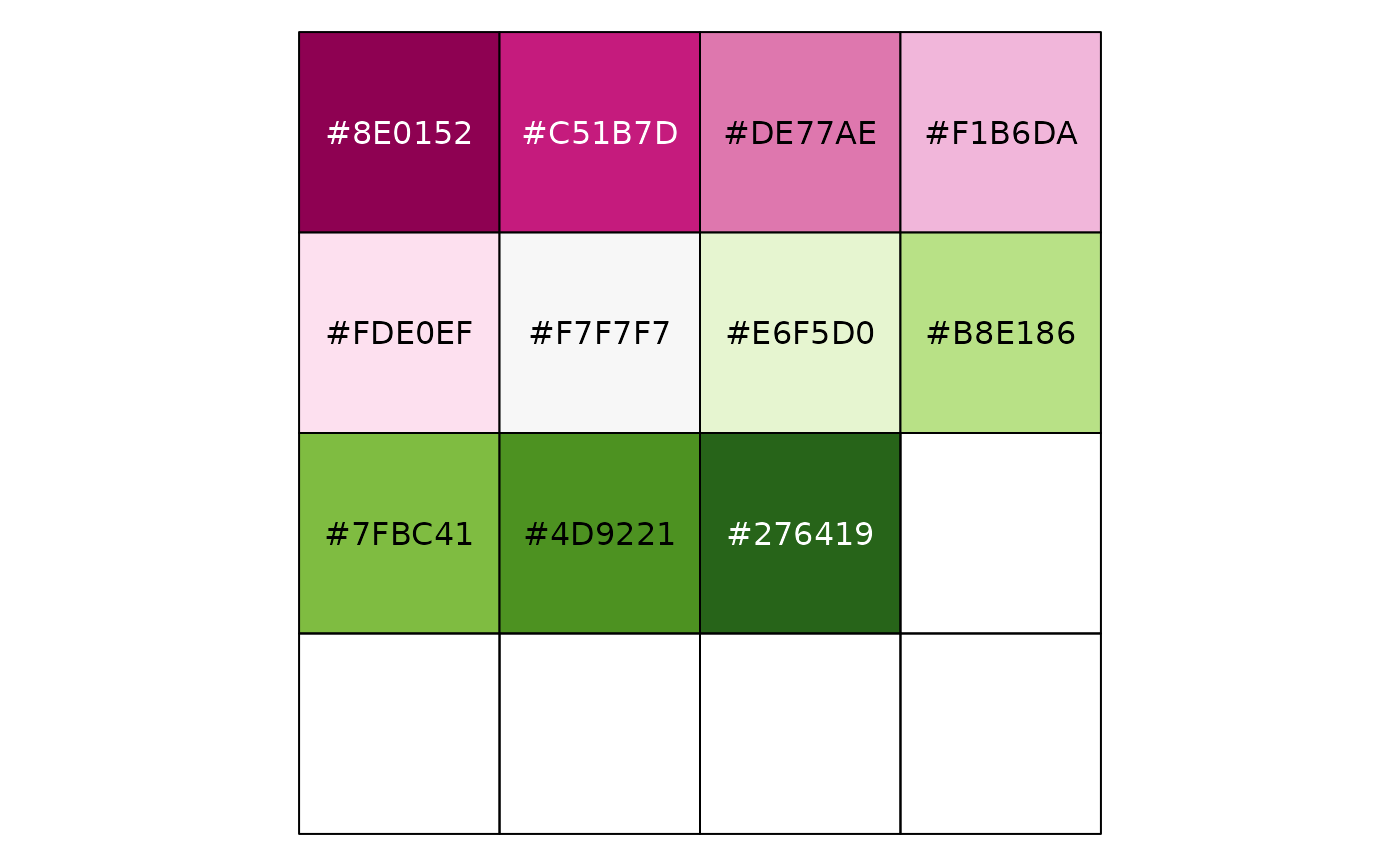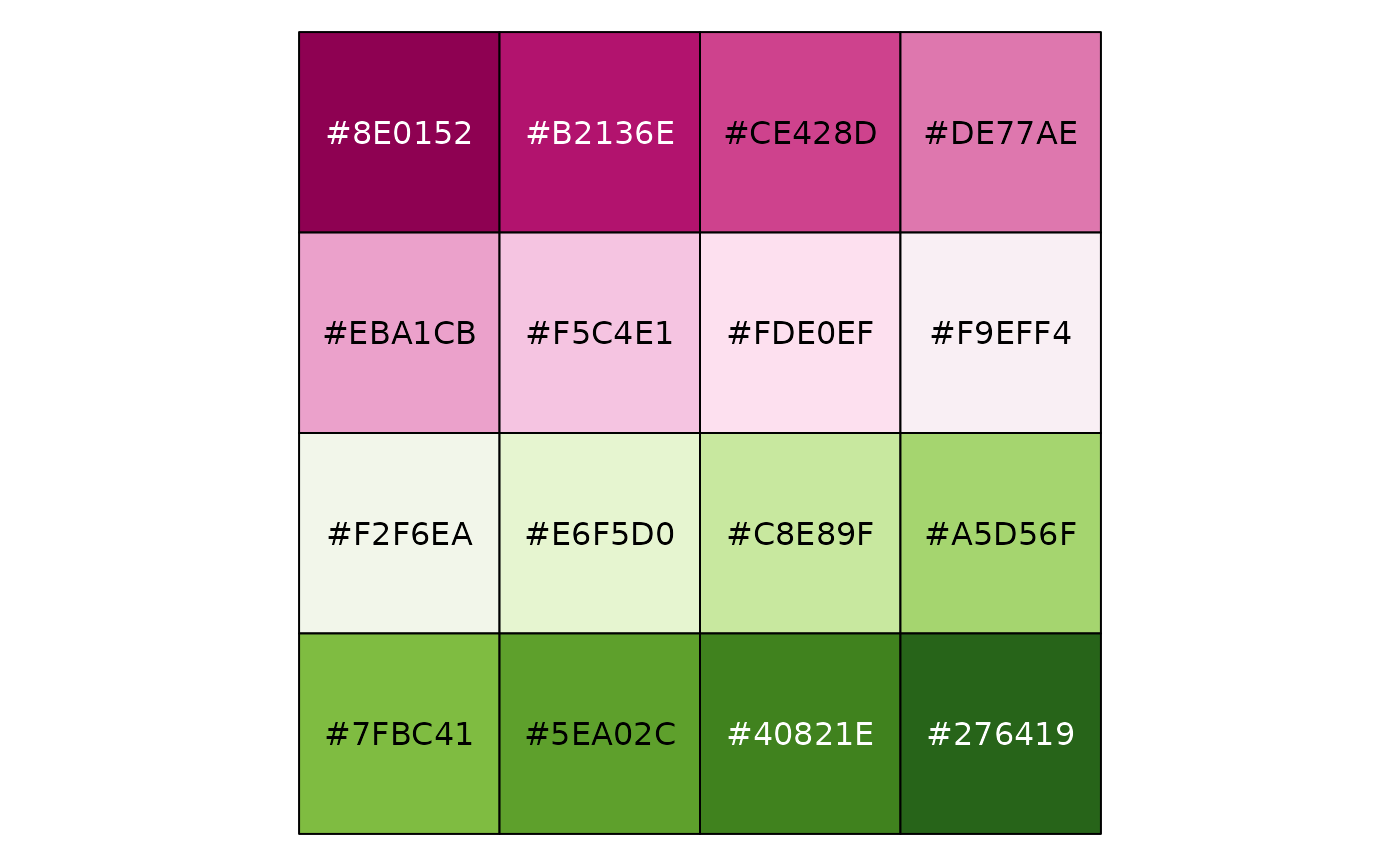If the palette returns less colours than requested, the list of colours
will be expanded using scales::pal_gradient_n(). To be used with a
sequential or diverging palette. Not relevant for qualitative palettes.
Usage
pal_extender(pal = scales::brewer_pal(palette = "BrBG"))
scale_fill_extended(
name = waiver(),
...,
pal = scales::brewer_pal(palette = "BrBG"),
aesthetics = "fill"
)
scale_colour_extended(
name = waiver(),
...,
pal = scales::brewer_pal(palette = "BrBG"),
aesthetics = "colour"
)Arguments
- pal
A palette function, such as returned by scales::brewer_pal, taking a number of colours as entry and returning a list of colours.
- name
The name of the scale. Used as the axis or legend title. If
waiver(), the default, the name of the scale is taken from the first mapping used for that aesthetic. IfNULL, the legend title will be omitted.- ...
Other arguments passed on to
discrete_scale()to control name, limits, breaks, labels and so forth.- aesthetics
Character string or vector of character strings listing the name(s) of the aesthetic(s) that this scale works with. This can be useful, for example, to apply colour settings to the colour and fill aesthetics at the same time, via
aesthetics = c("colour", "fill").
Examples
pal <- scales::pal_brewer(palette = "PiYG")
scales::show_col(pal(16))
#> Warning: n too large, allowed maximum for palette PiYG is 11
#> Returning the palette you asked for with that many colors
 scales::show_col(pal_extender(pal)(16))
scales::show_col(pal_extender(pal)(16))
